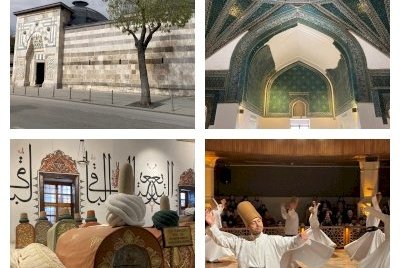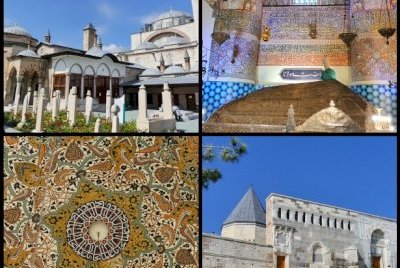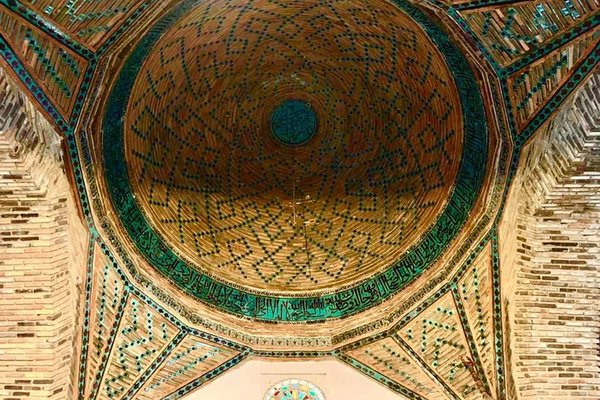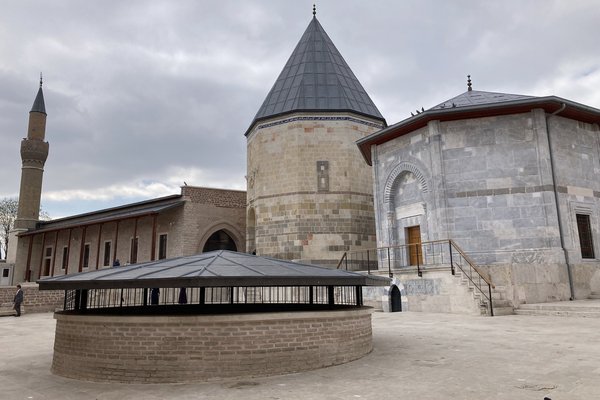Turkiye
Konya-A capital of Seljuk Civilization
Konya was the Seljuk capital during the 12th and 13th centuries.
It is a prime location to find Seljuk architecture in its public buildings. The Alâeddin Mosque is the principal monument on the citadel of Konya. The building served as the "Mosque of the Throne" for the Seljuk Sultans and contains the dynastic mausoleum. The town has several other notable mosques and madrasas.
Site Info
Official Information
- Full Name
- Konya-A capital of Seljuk Civilization (ID: 1404)
- Country
- Turkiye
- Status
-
On tentative list 2000
Site history
History of Konya-A capital of Seljuk Civilization
- 2000: Added to Tentative List
- Added to tentative list
- Type
- Cultural
- Criteria
Links
- UNESCO
- whc.unesco.org
All Links
UNESCO.org
- whc.unesco.org — whc.unesco.org
Community Information
- Community Category
- Urban landscape: Arabic and Middle Eastern
Travel Information
Recent Connections
News
No news.
Recent Visitors
Visitors of Konya-A capital of Seljuk Civilization
- Afshin Iranpour
- Alexander Lehmann
- Ali Zingstra
- A. Mehmet Haksever
- andyng-site
- Astraftis
- AYB
- bergecn
- Bin
- Bodil Ankerly
- Can SARICA
- Cheryl
- Christian Wagner
- christof
- Clyde
- Coppi
- Corinne Vail
- Dimitar Krastev
- Els Slots
- Erik Jelinek
- FK
- George Gdanski
- Hadrianus
- HaraldOest
- Hasco
- henryjiao18
- Hubert
- Hughes1920
- Jarek Pokrzywnicki
- Javier Coro
- Jawnbeary
- Jeffrey Chai
- Jon Opol
- Juha Sjoeblom
- Jurre
- Lucas Del Puppo
- Ludvan
- Luke LOU
- Maciej Gil
- Martina Rúčková
- Mateusz
- michaelsballard
- Monica Tasciotti
- nan
- Paul Schofield
- Pink Bunny
- Randi Thomsen
- RobRos
- Roger Ourset
- Roman Bruehwiler
- Sclowitz
- Solivagant
- Stanislaw Warwas
- Svein Elias
- Szucs Tamas
- Tamara Ratz
- Tarquinio_Superbo
- Thomas Buechler
- Tim Allen
- Timothy C Easton
- tony0001
- Tony H.
- Vernon Prieto
- Yevhen Ivanovych
- Zoe
Community Reviews
Show full reviewsEls Slots
Konya-A capital of Seljuk Civilization
Konya-A capital of Seljuk Civilization (On tentative list)

I choose Konya for a 2-night stay to take a break from the daily driving during my road trip across Western Turkey. That turned out to be a good choice: it’s a modern city with plenty to see and do. I left the car at my hotel, 11km on the outskirts of the city, and used the tramway to get right to Aladdin hill. In the center there still is a lot of construction going on, it seems that a whole neighbourhood will be replaced by glitzy shops and apartments. This unbridled development is the main reason that Konya can’t just go for a nomination of its historic center – it would need to focus on specific monuments and/or a specific theme.
According to the Epic Subtitle already present in the name of the Tentative Site (“A capital of Seljuk Civilization”) the most straightforward theme would be the Seljuk Dynasty and its architecture. I started with a visit to two madrasahs from that period (these are also part of another TWHS): the İnce Minareli Madrasah (closed for renovation, but with a noteworthy facade) and the very pretty Karatay Madrasah. The TWHS description also mentions the Sirçali Madrasa: I found this closed as well, but you can peek into the courtyard which has some tilework. Another one, integrated into the Sahib-i Ata complex, lies next to the Archeological Museum of Konya.
The monuments at the top of Aladdin Hill are also from the Seljuk period. To me, they looked …
Keep reading 0 commentsClyde
Konya-A capital of Seljuk Civilization
Konya-A capital of Seljuk Civilization (On tentative list)

I visited Konya in Spring 2021 and used it as my base for 3 nights to visit the Catalhoyuk WHS and several other components of other tWHS.
Konya is a major city in central-southern Turkey and the 7th most populous city in the country. The Konya region has been inhabited since the 3rd millennium BC and was ruled by the Hittites, Phrygians, Persians, Greeks and Romans. Konya was known as Iconium during classical antiquity. In the 11th century, the Seljuk Turks conquered the area and began ruling over its Rum (Byzantine) inhabitants making Konya the capital of their new Sultanate of Rum. Under the Seljuks, the city reached the height of its wealth and influence. Following the demise of Rum, Konya came under the rule of the Karamanids, before being taken over by the Ottoman Empire in the 15th century. There are two components of the Seljuk madrasahs tWHS (Ince Minareli Madrasah and Karatay Madrasah) and one location of the Seljuk caravanserais (Zazadin Han) which are already worth a stop in Konya.
However, the highlight and core area of Konya as a tWHS in its own right is the mausoleum of Jalal ad-Din Muhammad Rumi, a Persian Sufi mystic, still a pilgrimage site for many even though it is now known officially as the Mevlana Museum. It was also the dervish lodge of the Mevlevi order, better known as the whirling dervishes. It is right in the middle of the city and can't be missed with it's green …
Keep reading 0 commentsSolivagant
Konya-A capital of Seljuk Civilization
Konya-A capital of Seljuk Civilization (On tentative list)

The introduction to this entry on the UNESCO web site is enigmatically thin:- “The outer fortress of Konya and the Alaeddin Mosque, the Sirçali Madrasa, many small mosques and tombs are examples of Seljukian architectural elements of Konya.” This leaves the big question as to whether the Mevlana Museum, the home of the Whirling Dervishes, is to be included – it just doesn’t seem possible that this famous icon of Konya and indeed Turkey could be ignored . In which case why isn’t it mentioned?
Mediaeval Turkish history is unlikely to be a subject about which many of us are expert but a trip through Anatolia looking at the large number particularly of Seljuk Tentative List sites creates a dim understanding! It was the Seljuks who were the most significant of the original Muslim groups who entered the Byzantine Anatolian Empire from the East and set in motion the gradual expansion by force of arms of Turkic rule across the whole peninsular from around 1071 until eventually, another such group, the Ottomans, finally overcame Constantinople in 1453, thus completing the replacement of the Greek speaking Christian remains of the Roman empire with a Turkish Muslim one. The Seljuks were a Turkic dynasty which had emerged from the lands between the Aral and Caspian Seas, establishing themselves first in Persia, from where they expanded East and West. Their control over Anatolia never extended completely to the east of the peninsular (They did for a short time reach Iznik – another of …
Keep reading 0 comments

